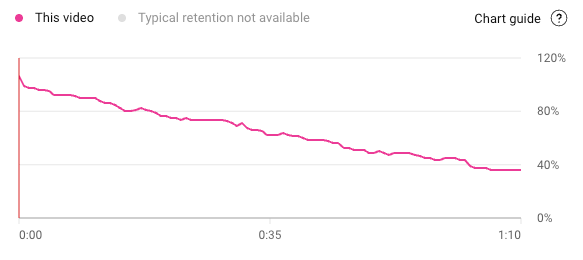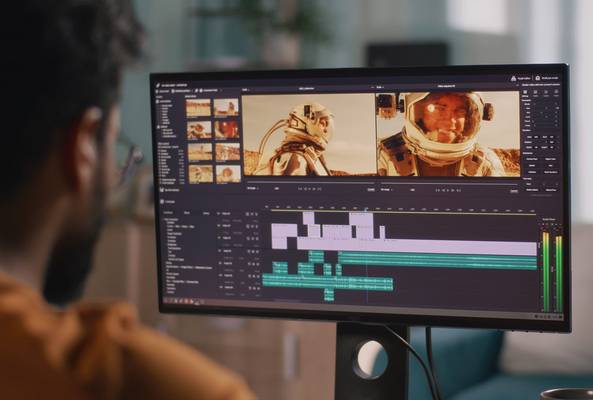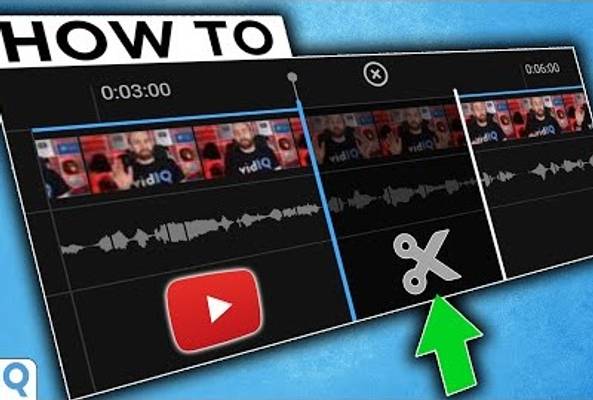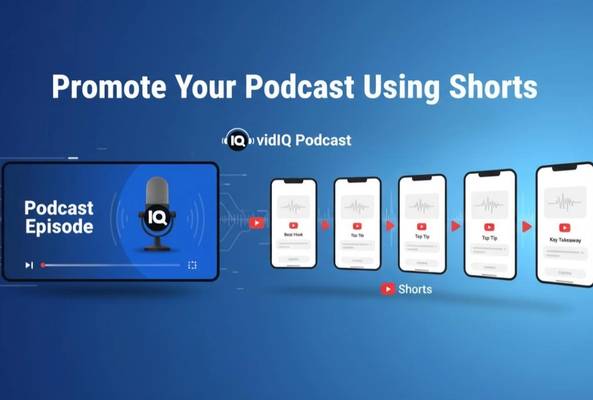Darryl is a writer with years of experience in online video software, combining technical expertise with a passion for educating audiences. When not writing, he’s tending to his farm surrounded by horses, chickens, dogs, and somehow cramming more plants into his garden than it could ever reasonably hold.
Improving Engagement: How to Strategically Edit YouTube Videos After Upload
Are those dips in your YouTube retention graph keeping you up at night? You're not alone. Many creators wonder if they can salvage underperforming videos by editing out sections where viewers drop off. But should you edit YouTube videos after upload? We’ll cover a strategic approach that even top creators like MrBeast have experimented with.
Understanding Audience Retention
Audience retention is a crucial metric for any content creator. It tells you how long viewers are staying engaged with your YouTube video. If you notice significant dips in your retention graph, it’s worth investigating. A drop in viewership can indicate that parts of your video are boring or unengaging. But does that mean you should immediately edit those sections? Not necessarily.

Analyzing Retention Graphs
YouTube’s Retention graphs can be incredibly insightful. For instance, if you see a steep drop at a specific point, it might suggest that viewers are losing interest. But before you edit, consider the context of that drop. For instance, is it during a long intro, or does it occur during critical content? Understanding why viewers are tuning out is key to determining whether an edit is necessary.
Learning from the Data
Learning from retention graph data means analyzing both the drops and the sections where viewers are most engaged. Instead of focusing solely on editing uploaded content, consider how those learnings can enhance your next project.
What Editing After Upload Can and Cannot Do
YouTube Studio’s editor has specific limitations that are critical to understand before you start cutting:
What You Can Do
- Trim the beginning, middle, or end of your video
- Remove entire sections that might be causing viewers to leave
- Make simple cuts without requiring a re-upload
- Preserve your video’s URL, views, comments, and engagement history
What You Cannot Do
- Add new footage or B-roll
- Insert transitions between cuts
- Add text overlays or new graphics
- Change the audio track
- Make complex edits that require professional editing software
The YouTube Studio editor makes it relatively easy to edit YouTube videos after upload, trimming unwanted sections and making changes in a matter of minutes. However, the simplicity of the tool means you need to be strategic about what you cut.
Should You Edit Your YouTube Video After Uploading?
The answer isn’t straightforward. Editing uploaded videos can be beneficial, but it also has its drawbacks. Here’s a breakdown of the considerations you should keep in mind.
Benefits of Editing YouTube Videos After Uploading
- Improved Watch Time: If you remove sections that are clearly causing viewers to leave, you could potentially boost your watch time.
- Better Engagement: Trimming unnecessary content can lead to a more engaging video, making it easier for your audience to stay connected.
- Learning Opportunity: Making edits allows you to experiment and see if changes positively affect your metrics.
Drawbacks of Editing YouTube Videos After Uploading
- Loss of Context: Removing sections can disrupt the flow of your video, leading to confusion. If you cut out a part that sets up a joke or a critical piece of information, viewers might feel lost.
- Time-Consuming: Editing can be a lengthy process, and if the video is performing well, it might not be worth the effort.
- Uncertain Results: There’s no guarantee that your edits will improve performance. Sometimes, changes can make things worse.
When to Consider Editing After Uploading to YouTube
Not every dip in your retention graph warrants post-upload editing. Here are scenarios where it might make sense:
1. Overly Long Introductions
One of the most common causes of early drop-offs is lengthy introductions. If your retention graph shows a significant dip in the first 30 - 60 seconds, trimming your intro could lead to immediate improvements.
2. Extended Outros That Don’t Convert
The end section of YouTube videos often shows a retention drop where viewers lose interest after the call-to-action. If your outro is followed by unnecessary content, trimming the tail end could boost your overall retention metrics.
3. Clear Dips in the Middle
If specific content sections cause noticeable viewer abandonment, and removing them wouldn’t disrupt the video’s logical flow, strategic trimming might make sense. Ensure that edits don’t create awkward transitions or confuse viewers.
The Strategic Decision-Making Process
Before rushing to edit your uploaded video, consider these important factors:
Video Performance Context
If your video is performing well but has low average view duration, it might not be worth making changes. Conversely, for underperforming videos, thoughtful editing might be worth experimenting with, though it’s unlikely to "resurrect" a video that’s fundamentally missing the mark.
Weighing Potential Benefits Against Risks
Each video edit carries both potential upside and downside. Key considerations include:
- Content coherence: Will the edit create awkward transitions or remove necessary context?
- Viewer feedback: Are comments specifically mentioning sections that drag?
- Alternative improvements: Could changing your video title or thumbnail deliver better results than editing the video itself?
How to Strategically Edit YouTube Videos After Upload
If you’ve decided to move forward with editing uploaded videos, here’s a step-by-step approach:
1. Analyze Your Retention Graph Thoroughly
- Look for sharp drops rather than gradual declines.
- Note timestamp correlations with specific content segments.
- Consider whether the drop-off coincides with topic changes or segment transitions.
2. Make Precise Cuts in YouTube Studio
- Sign in to YouTube Studio.
- Click on "Content" in the left navigation.
- Find and select the video you want to edit.
- Click "Editor" in the left menu.
- Select "Trim & Cut" and then "New Cut."
- Drag the red box to select the section you want to remove.
- Preview your edit to ensure the transition works.
- Save your changes.
3. Track Results After Editing
Establish a clear measurement process. Focus on metrics like:
- Average view duration (before and after the edit)
- Retention graph changes
- Click-through rate (if applicable)
- Overall engagement metrics
Learning from MrBeast and Other Top Creators
Top creators like MrBeast have experimented with editing uploaded videos to improve performance. While this technique isn’t a guaranteed success, it highlights the importance of continually refining content and learning from audience behavior.
Alternatives to Editing
While fixing existing videos has its place, the most valuable approach combines reactive editing with proactive improvement:
- Apply retention insights to future videos: Use data to refine intros, pacing, and transitions.
- Optimize thumbnails and titles: A compelling thumbnail and title might deliver far greater performance improvements than minor video edits.
The Balance Between Perfectionism and Progress
Avoid falling into the trap of endlessly editing uploaded content. Instead, focus on:
- Making obvious improvements to existing videos when clear opportunities exist.
- Applying insights to new content.
- Recognizing when diminishing returns suggest moving on.
An Experimental Mindset Is Key
Strategically editing uploaded YouTube videos can improve engagement metrics, but the real value lies in applying insights to future content. Experimentation, measurement, and adaptation remain your most powerful tools for long-term success.
Here are 4 Editing Hacks to Make any YouTube Video go Viral.
FAQs
Can you edit YouTube videos after uploading them?
Yes, YouTube allows you to edit videos after uploading using the YouTube Studio editor. You can trim the beginning, middle, or end of your video and remove unwanted sections without re-uploading, while preserving views, comments, and engagement history.
Will editing a YouTube video after uploading affect its performance?
Editing can improve performance by addressing dips in audience retention, but results may vary. Removing unengaging sections could boost watch time and engagement, but there’s no guarantee. It's crucial to weigh potential benefits against risks like disrupting the video's flow.






